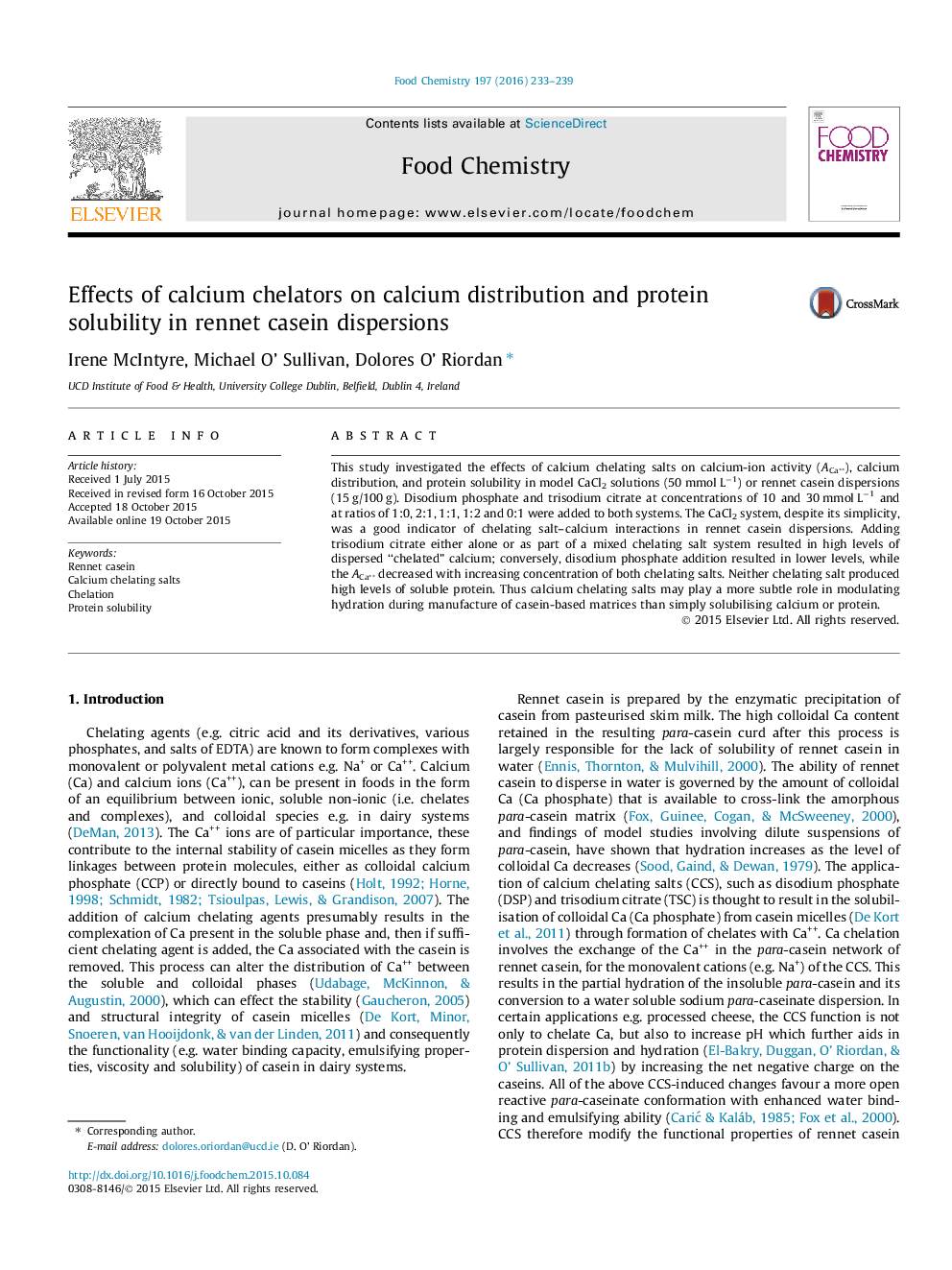| Article ID | Journal | Published Year | Pages | File Type |
|---|---|---|---|---|
| 1183462 | Food Chemistry | 2016 | 7 Pages |
•Chelating salt–Ca interactions were studied in CaCl2 solutions and casein dispersions.•Citrate formed soluble chelates with Ca and phosphate formed insoluble complexes.•Addition of chelating salts did not result in high levels of soluble protein.•The role of Ca in protein solubility and its impact on casein functionality was studied.
This study investigated the effects of calcium chelating salts on calcium-ion activity (ACa++), calcium distribution, and protein solubility in model CaCl2 solutions (50 mmol L−1) or rennet casein dispersions (15 g/100 g). Disodium phosphate and trisodium citrate at concentrations of 10 and 30 mmol L−1 and at ratios of 1:0, 2:1, 1:1, 1:2 and 0:1 were added to both systems. The CaCl2 system, despite its simplicity, was a good indicator of chelating salt–calcium interactions in rennet casein dispersions. Adding trisodium citrate either alone or as part of a mixed chelating salt system resulted in high levels of dispersed “chelated” calcium; conversely, disodium phosphate addition resulted in lower levels, while the ACa++ decreased with increasing concentration of both chelating salts. Neither chelating salt produced high levels of soluble protein. Thus calcium chelating salts may play a more subtle role in modulating hydration during manufacture of casein-based matrices than simply solubilising calcium or protein.
